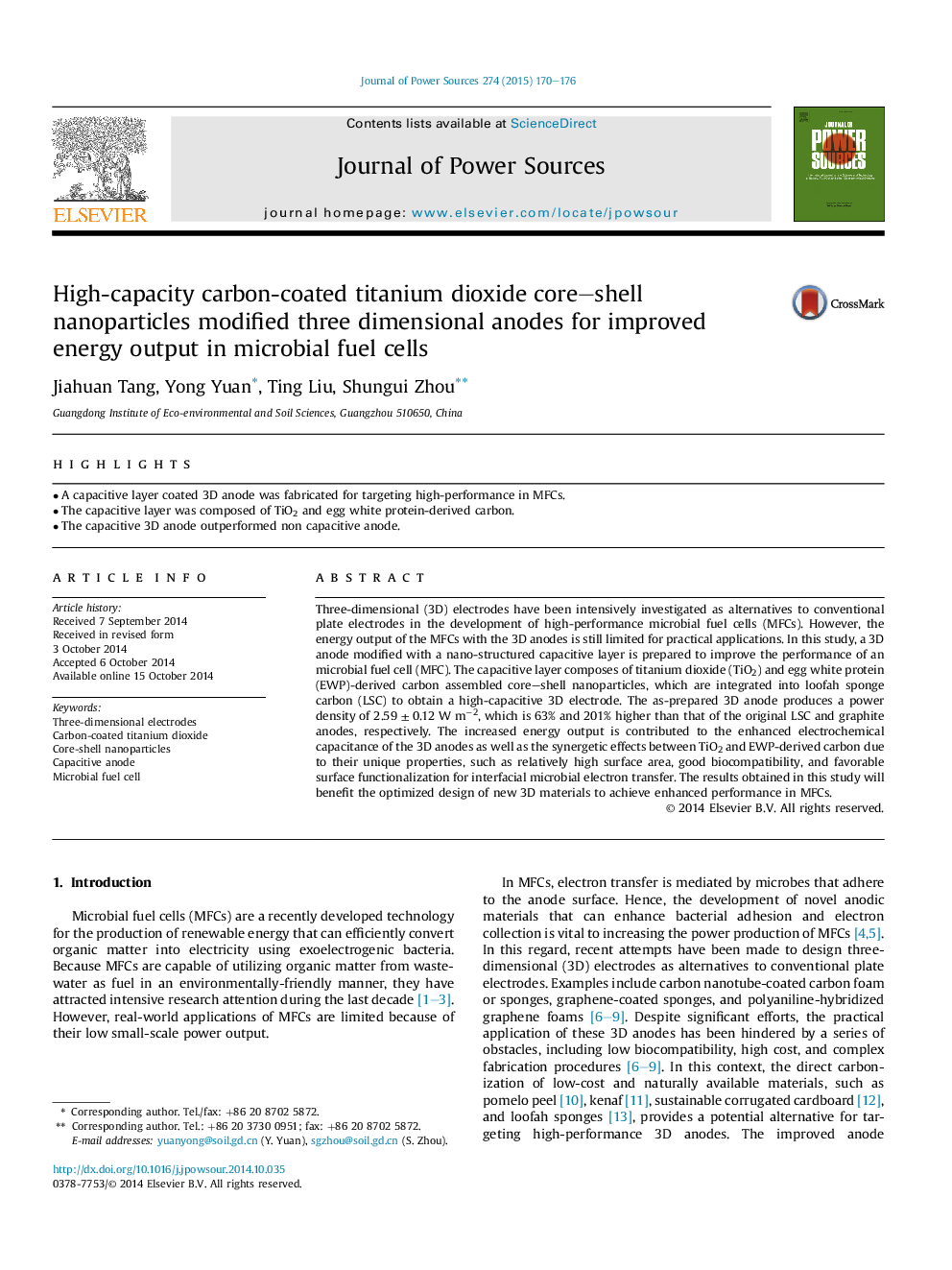| Article ID | Journal | Published Year | Pages | File Type |
|---|---|---|---|---|
| 7734174 | Journal of Power Sources | 2015 | 7 Pages |
Abstract
Three-dimensional (3D) electrodes have been intensively investigated as alternatives to conventional plate electrodes in the development of high-performance microbial fuel cells (MFCs). However, the energy output of the MFCs with the 3D anodes is still limited for practical applications. In this study, a 3D anode modified with a nano-structured capacitive layer is prepared to improve the performance of an microbial fuel cell (MFC). The capacitive layer composes of titanium dioxide (TiO2) and egg white protein (EWP)-derived carbon assembled core-shell nanoparticles, which are integrated into loofah sponge carbon (LSC) to obtain a high-capacitive 3D electrode. The as-prepared 3D anode produces a power density of 2.59 ± 0.12 W mâ2, which is 63% and 201% higher than that of the original LSC and graphite anodes, respectively. The increased energy output is contributed to the enhanced electrochemical capacitance of the 3D anodes as well as the synergetic effects between TiO2 and EWP-derived carbon due to their unique properties, such as relatively high surface area, good biocompatibility, and favorable surface functionalization for interfacial microbial electron transfer. The results obtained in this study will benefit the optimized design of new 3D materials to achieve enhanced performance in MFCs.
Related Topics
Physical Sciences and Engineering
Chemistry
Electrochemistry
Authors
Jiahuan Tang, Yong Yuan, Ting Liu, Shungui Zhou,
